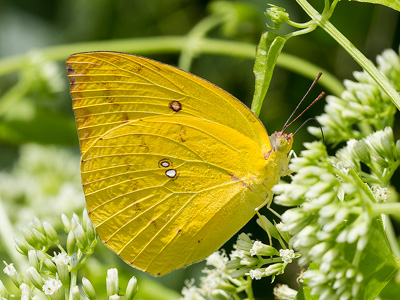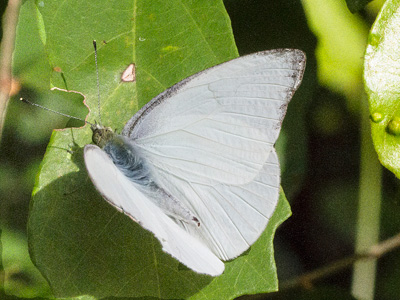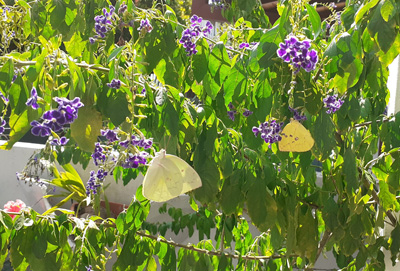News
Butterfly boom sees crowds of yellow visitors suddenly appear
Sri Lanka is experiencing a butterfly boom these days with even suburbs of congested cities such as Colombo seeing an increase in the fluttering visitors.

A Lemon Emigrant
Many of them belong to the yellow Lemon Emigrant (Catopsilia pomona) species that traditionally begin a seasonal movement at this time of year, says butterfly expert Rajika Gamage.
Mr. Gamage, who is observing butterflies in the Thanamalwila area, said about 70 per cent of what he is seeing are Lemon Emigrants and about 10 per cent the Common Leopard and Lesser Albatross species.
Many reports are also coming in of clouds of butterflies such as the Crimson Rose out at sea, several nautical miles from shore. Renowned lepidopterist Dr. Michael van der Poorten confirmed butterfly movements have been observed from the Mannar area westward out to sea and from the Trincomalee area eastward out to sea.
Until the mid-80s when, for reasons ranging from deforestation to pollution the phenomenon disappeared, it was customary to see thousands of butterflies appearing in clouds in Sri Lankan skies from February to April.
As this is the season of pilgrimage to Sri Pada mountain, Buddhist folklore had it that the butterflies also visited the mountain to pay homage to Lord Buddha. Thus the mountain was given another name, Samanala Kanda or “butterfly mountain.
“Indeed, many butterflies of several species are seen flying towards and up the mountain and are sometimes found dead at the top,” said Dr. van der Poorten.
Lemon Emigrants make this seasonal movement, as do many other species such as the Common Albatross, Lesser Albatross, Pioneer, Common Gull, Blue Tiger and Common Banded Peacock, he said.

Lesser Albatross
In 1949, the lepidopterist, L.G.O. Woodhouse, reported 69 species in this migration but now fewer species are seen, Dr. van der Poorten said.
He explained that seasonal movements occur soon after a boom in butterfly populations, which often happens soon after rainfall breaks a drought.
“A drought can reduce populations of both butterflies and their prey. But when the right conditions arrive the butterfly population can recover fast, leading to a boom,” Dr. van der Poorten said, adding that science knew little about these migration patterns or their causes.
Rajika Gamage said butterfly migrations occur throughout the year but only come to public notice when there is a boom in numbers.
“Continuous rain could help plants to grow lots of tender leaves that could provide healthy host plants for caterpillars to feed on, resulting in a boom,” Mr. Gamage said.
Himesh Jayasinghe of the Butterfly Conservation Society of Sri Lanka said society members are sharing reports of butterfly sightings on Whatsapp and these will be analysed to identify migration patterns.
The most extravagant butterfly migration occurs on the American continent when thousands of Monarch butterflies make an annual migration.
These swarms, unlike those found in Sri Lanka, including those that go to Sri Pada, return home after their seasonal migration.

Lemon Emigrants in Matara
Each year, millions of Monarch butterflies leave their summer breeding grounds in the North Eastern United States and Canada and travel almost 5,000km to reach overwintering grounds in Mexico.
While these swarms – officially a swarm of butterflies is known as a kaleidoscope of butterflies – eventually return home they are then made up of new butterflies. It takes as many as four to five generations to complete the full journey all the way back up to Canada and the US as the Monarchs’ lifespan can be just two to five weeks.

